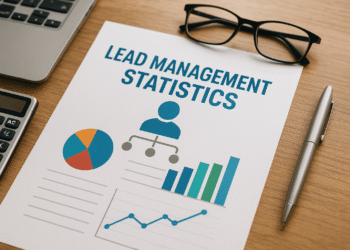CRM Data management is essential to any successful customer relationship management (CRM) system. It helps ensure the accuracy and completeness of customer records and the ability to access that data quickly and easily. This article will discuss some of the best practices for managing your CRM data, including data accuracy, security, storage, and reporting.
What Is CRM Data Management
CRM data management collects, stores, and analyzes customer data to make better decisions and provide better customer service. It involves maintaining data accuracy, security, storage, and reporting.
CRM Data Management Best Practices
Data Accuracy
One of the most critical aspects of managing your CRM data is accuracy. Data accuracy means that the information you are storing is up-to-date and correct. To ensure accuracy, it’s essential to have a data entry process that is well-defined and followed consistently. This could include double-checking data entry, verifying customer information against multiple sources, and using automated tools to help reduce errors.
Data Security
It’s also essential to make sure that your CRM data is secure. This means taking measures to protect the data from unauthorized access and use. This could include using secure passwords, limiting access to specific users, and encrypting data. It’s also essential to have a policy in place for when and how data is stored and accessed.
Data Storage
Data storage is also an essential part of data management. It’s vital to ensure that your data is stored in a secure, reliable environment that is easily accessible. This could include storing data on a local server or in the cloud. Whichever method you choose, ensure that it is backed up regularly and the data is monitored for accuracy.
Data Reporting
it’s essential to have a system for reporting your CRM data. This could include generating reports that show customer trends, sales performance, and customer satisfaction. It’s essential to have a reporting system that is easy to use and understand so that you can quickly make decisions based on the data.
Data Visualization
Data visualization is an integral part of data reporting. It allows users to quickly and easily understand the data and make informed decisions. Data can be visualized using charts, graphs, and other forms of visual representation. Additionally, data visualization can be used to identify trends and develop insights into customer behavior and preferences.
Data Analysis
Data analysis is another key component of data management. Data analysis involves looking at the data to identify patterns and relationships. This can be done using a variety of techniques, such as machine learning and statistical analysis. Organizations can better understand their data and make more informed decisions by leveraging data analysis.
Finally, data governance is an important part of any data management system. Data governance involves setting policies and procedures for how data is collected, stored, and used. This helps ensure that data is handled securely and compliant and that data integrity is maintained.
By following the best practices outlined here, you can ensure your CRM data is accurate, secure, and well-managed. This will help you to make better decisions and provide better customer service.






























